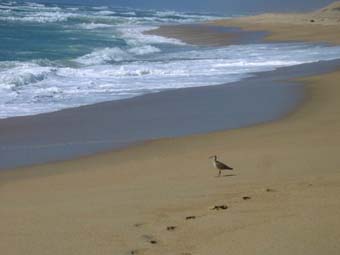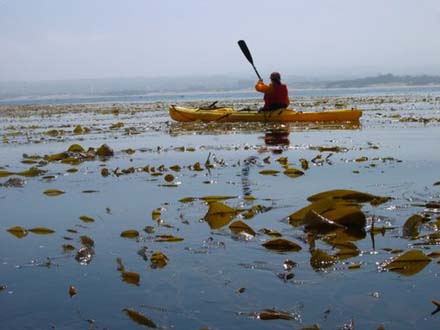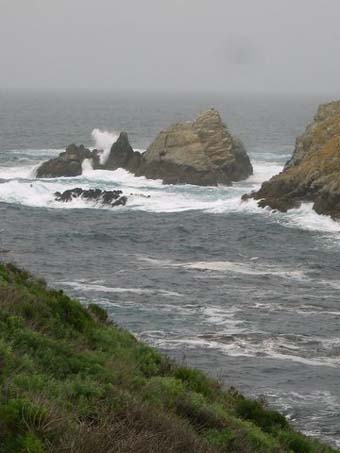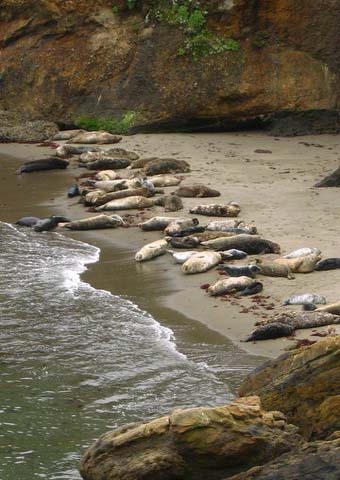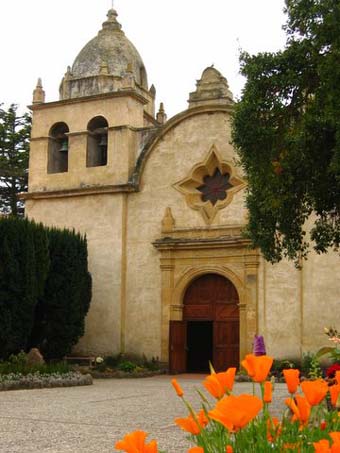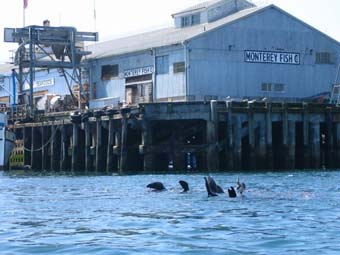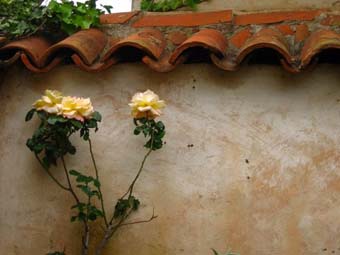My wife and I were on a kayak tour while
holidaying in Monterey. I had read that Monterey Bay, a large bite
out of the sunny California coastline, is blessed with abundant
sea life but I had never expected the phenomenal array of marine
life we were to observe.
The initial surge of excitement from getting
our kayaks through the shoreline surf, turned to a wonderful soothing
contentment as we floated amongst kelp beds, gently rising and falling
with the swell — it was like being next to the heartbeat of
Mother Earth. The sky was a pale blue and our kayaks were bright
patches of red and yellow bobbing on the deep aquamarine of the
water. Near us, a few sea otters were sleeping in the warmth of
the sun, fuzzy balls curled up in kelp so they wouldn’t drift
away. Black cormorants flew past, their beaks laden with large pieces
of kelp to line their nests. A small delicate phalarope flittered
on the kelp, spending as much time walking as flying.
Although 75 per cent of the Earth is covered
by water, it always astonishes me how alien the ocean is to us humans.
In our kayaks especially, we were floating on a very thin layer
of the immensity of the depths below. We did, however, have a good
feel for what life forms lay below, as we had spent the previous
day at the Monterey Bay Aquarium, considered the best in North America,
and perhaps in the entire world.
Opened in 1984 in an old sardine-canning
factory on historic Cannery Row, the aquarium offers many fascinating
exhibits of jelly fish, octopi, sharks, manta rays, and otters,
all of which embody and illustrate the precious habitat of Monterey
Bay, one of the richest marine environments on the globe. My favourite
was the three-storey-high Kelp Forest gallery, that towered over
us like a cathedral providing a window into the mysterious marine
realm. Sunlight filtered through the water onto 30-foot, golden-yellow
kelp that swayed sensuously back and forth. Cruising and thriving
amongst the tall kelp was an enormous variety of life including
leopard sharks, sardines, wolf-eels, rockfish, lingcod, sea urchins,
starfish, abalone and much, much more.
Now here we were, in our kayaks floating
on top of the great, teeming, exotic — and totally uncontained
— marine world .
We paddled from the kelp beds toward the
Coast Guard pier, a favourite sea lion hangout, where the air resounded
with a raucous roar and barking. We were greeted by hundreds and
hundreds of sea lions basking on the rocks, lying on buoys, and
constantly jostling and arguing over the best spots. Many swam,
perhaps out of curiosity, near our kayaks.
Frequently we passed a bizarre sight: a group
of black flippers floating vertically in the water like a flotilla
of small sails. Amongst them whiskered noses also protruded from
the water. Below the surface more than a dozen sea lions were holding
a floating sleep-in, our guide explained. The raised flippers act
as solar panels bringing warmth to the submerged somnolent animals.
All too soon our time was up and we rode
the surf into the sandy beach.
We continued to explore the stunning coast
of this part of northern California. North of Monterey the shoreline
is lined with vast sand dunes and the golden soft sand beaches are
magnets for sunworshippers, surfers, birdwatchers and kite fliers.
A hang-glider, its translucent red wings shimmering in the sunlight,
skimmed over us, silent as a shadow.
We then pointed the car southward to Point
Lobos State Park, the northernmost extent of the dramatic Big Sur
coastline that lies south of Monterey. Here, outside the shelter
of the bay, the coast is wild and untamed. At Sea Lion Point we
watched waves roll in from the far reaches of the Pacific, as they
have done for eternity, and fling themselves against the rocky headland.
Every few moments a seething column of spray was tossed high in
the air. At Whalers Cove, where in the late 1800s the waters ran
red with the slaughter of thousands of whales, about 40 harbour
seals and pups lay peacefully on a small beach like driftwood cast
up by a storm.
Next day, following the yellow markers of
the self-guided Path of History, we learned about Monterey’s
long and intriguing past. The city served as the capital of California
under Spanish rule in the late 1700s and also under Mexican rule
from 1822 to 1846. We passed lovingly restored Spanish-era buildings
with orange tile roofs and brilliant red roses and rhododendrons
leaning against adobe walls. In the Royal Presidio Chapel, now known
as San Carlos Cathedral, which has been in continuous use since
1794, we gazed upward as sunshine filtered into the darkened cool
nave.
Probably the most beautiful and serene place
in the region, and one of the most popular sites of pilgrimage in
the United States is the Carmel Mission, founded in 1770. Visited
by Pope John Paul II in 1987, the mission is both a museum and functioning
place of worship. The basilica and its surrounding halls and gardens
are alive with history, and are also a photographer’s dream.
Every scene, from the weathered wooden crosses surrounded by orange
poppies in the small cemetery, to the massive hand-carved door,
to the cross high over the adobe bell tower, is achingly beautiful.
Our departure from Monterey was bitter sweet.
We had learned so much and exulted in the experience. But much was
left undone: we had not sampled the fine wineries, or watched for
whales, or visited the Steinbeck Museum, or hit a ball on a world-class
golf course, or driven the famous Seventeen Mile Tour. Perhaps next
time.
For more information on the Monterey Bay
area, read Hans's article Mighty
Moss: A Smokescreen over a Gem of a Town
© Photographs copyright of Hans
Tammemagi
